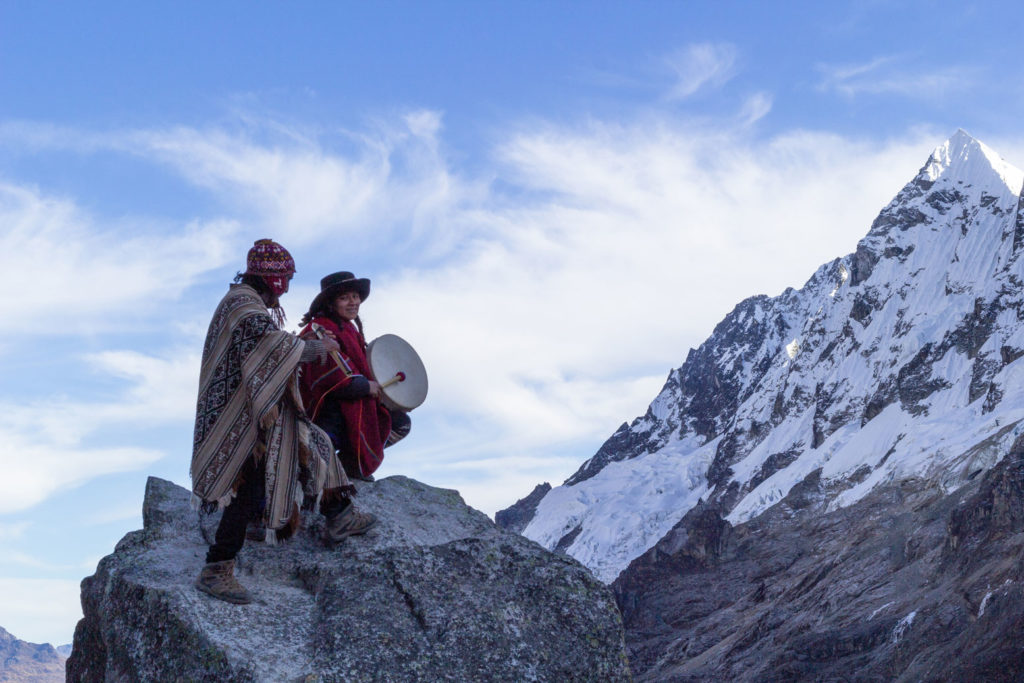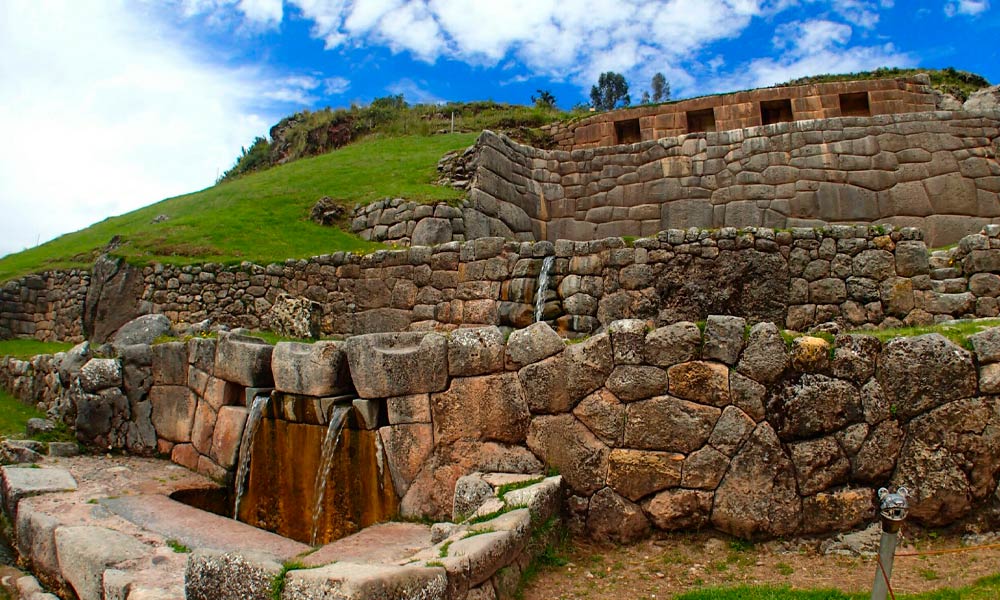Spiritual ceremonies in the world’s mountains hold a universal appeal transcending cultural boundaries. The grandeur of these natural wonders has consistently evoked a sense of awe and spiritual connection among people from diverse backgrounds. Mountains, often reaching skyward like colossal pillars, symbolize a bridge between the earthly and celestial realms. This unique quality has made them ideal settings for rituals, meditations, and ceremonies aimed at reaching higher states of consciousness and communing with the divine.
Throughout history, various cultures have recognized the spiritual significance of certain mountains, endowing them with deep reverence and often considering them sacred. These sacred mountains become focal points for pilgrimages, rituals, and ceremonies that seek spiritual enlightenment, healing, or divine guidance.
One such notable mountain is Mount Kailash in Tibet, revered by Hindus, Buddhists, and followers of the Jain religion. It is considered the abode of Lord Shiva in Hinduism and has been a site of pilgrimage for centuries, with the belief that circumambulating the mountain can lead to spiritual liberation.
Mount Sinai in Egypt is another sacred peak, known for its association with pivotal moments in the Abrahamic religions. According to tradition, it was here that Moses received the Ten Commandments from God. Pilgrims and seekers of spiritual wisdom continue to visit this mountain to connect with the profound events of the past.
In Cusco, Peru, the mountains of Salkantay and Ausangate have their own rich spiritual significance. These stunning Andean peaks have been revered by the indigenous Quechua people for generations. They are believed to house protective spirits and are often the backdrop for sacred ceremonies and rituals aimed at maintaining harmony with nature and seeking blessings from the mountain deities.
In this article, we will delve deeper into the spiritual ceremonies conducted on the Salkantay and Ausangate mountains, exploring the rituals that connect people with the ancient wisdom and spiritual essence these natural wonders embody. Additionally, we will provide insights into the unique cultural and natural heritage of these remarkable locations in Cusco, Peru, offering a holistic understanding of the spiritual ceremonies that unfold in their shadow.
Mount Kailash
circumambulation or pilgrimage around the mountain. Undertaken with utmost devotion, this ritual journey spans approximately 32 miles and is believed to cleanse the soul of accumulated sins. Pilgrims, their faces marked with unwavering determination, navigate steep and challenging terrain, often prostrating themselves in full-body-length stretches as they inch forward in their sacred journey. The Kora is not a physical endeavor alone; it’s a profound spiritual voyage that seeks not only to purify but also to connect with the divine energies that saturate the mountain’s essence.
Within the folds of Mount Kailash’s majesty, spiritual seekers and monks find an ideal backdrop for meditation and sacred rituals. The mountain’s towering peaks and serene environs create an ambiance that is conductive to introspection, contemplation, and communion with the spiritual realm. In these hallowed grounds, practitioners delve deep into their inner selves, seeking enlightenment and a closer connection to the divine.
Beyond the physical realm, Mount Kailash serves as a conduit to the metaphysical. Its unique geological formation, characterized by four distinct faces, each aligned to a cardinal point, holds profound cosmological symbolism. The North Face represents the seat of Lord Shiva, while the West Face symbolizes the heart. The South Face embodies the womb, and the East Face signifies wisdom. These facets invite seekers to explore the multifaceted dimensions of existence, offering a gateway to profound spiritual insights.
Whether walking the sacred path of the Kora, engaging in meditation, or performing rituals, those who journey to Mount Kailash find themselves immersed in an atmosphere where the boundaries between the material and the spiritual blur. Here, the mountain’s rocky facade becomes a canvas for the human soul’s transcendental aspirations, an earthly link to the divine, and a testament to the enduring power of spiritual practice.
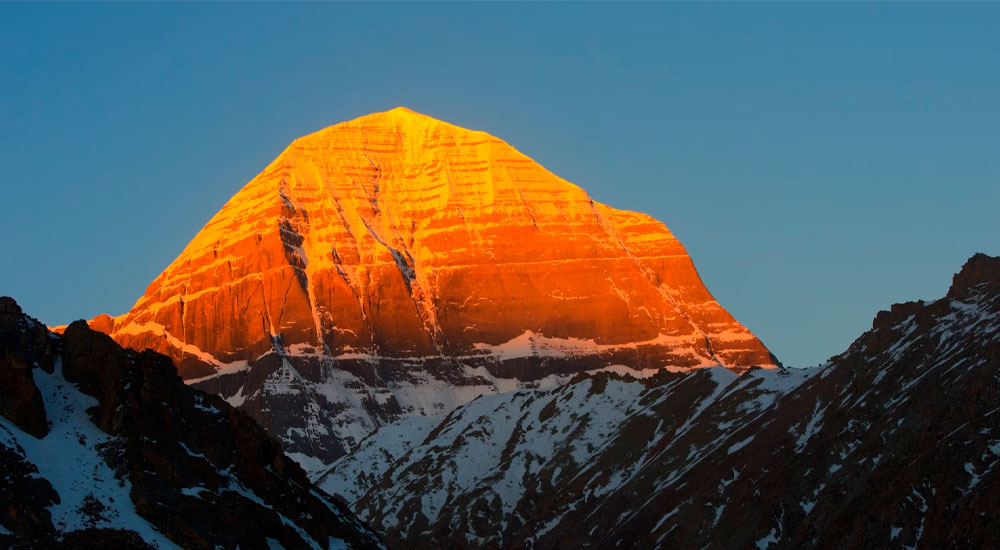
Mount Shasta
Nestled in the heart of California, Mount Shasta is not only a picturesque natural wonder but also a revered center of spirituality, drawing seekers, mystics, and spiritual pilgrims from various walks of life. Its magnetic allure lies not just in its stunning landscapes but in the profound spiritual energy that pulses through its very core.
In Native American beliefs, Mount Shasta has long been regarded as a sacred site, a place where the earth and the spiritual realm converge. It’s often seen as the dwelling place of powerful spirits, guardians of the land. This deep-rooted reverence has persisted over generations, and many indigenous ceremonies and rituals continue to be conducted on the mountain’s slopes. These rituals are conducted to honor the land, seek guidance from ancestral spirits, and maintain a spiritual connection with the natural world.
However, Mount Shasta’s spiritual significance transcends indigenous traditions. It has emerged as a focal point for the New Age movement, where ancient wisdom meets modern spirituality. The mountain’s pristine surroundings and serene atmosphere create an ideal setting for spiritual retreats and gatherings. Here, individuals and groups engage in practices ranging from meditation and yoga to sound healing and energy work. The goal is to tap into the mountain’s inherent spiritual energy, which is believed to facilitate inner transformation and spiritual growth.
One of the most intriguing aspects of Mount Shasta’s spirituality is its association with encounters with spiritual beings and ascended masters. Many claim to have experienced profound spiritual awakenings and encounters with divine entities while on or near the mountain. These experiences have led to a belief that Mount Shasta serves as a bridge between the earthly and celestial realms. In response, meditations and rituals are performed with the intention of connecting with these spiritual guides, receiving their wisdom, and seeking healing and enlightenment.
As the sun sets behind the majestic peak of Mount Shasta, and the mountain’s contours are bathed in the soft glow of twilight, there’s an overwhelming sense that this place is a conduit for higher consciousness. It invites those who seek spiritual growth to commune with the mysteries of the universe and delve deeper into the recesses of their own souls. Mount Shasta stands not only as a testament to the natural beauty of the world but as a gateway to the infinite realms of the spirit, where earthly and divine forces merge in harmonious unity.
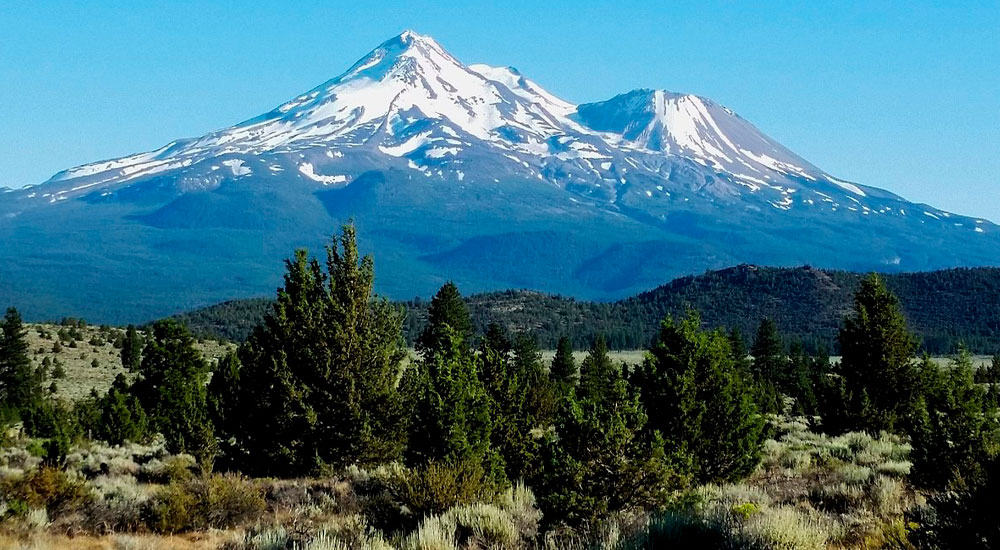
Mount Fuji
In the Land of the Rising Sun, Mount Fuji stands as a beacon of spiritual significance and cultural reverence. This iconic peak, soaring proudly over the Japanese landscape, is far more than just a geological wonder; it is deeply intertwined with the spiritual fabric of Japan, embraced by both Shinto and Buddhist traditions.
For centuries, Mount Fuji has beckoned to pilgrims, seekers, and those in search of spiritual renewal. Ascending its majestic slopes is not merely a physical journey; it is a sacred odyssey, a passage through the realms of earth and spirit. The act of climbing Mount Fuji, often done during the pilgrimage season in July and August, is seen as a profoundly spiritual experience. The mountain itself is believed to be a manifestation of the divine, and the ascent becomes a metaphorical journey towards enlightenment and self-discovery.
The pilgrimage up Mount Fuji is marked by various rituals and meditative practices. Pilgrims often pause at the mountain’s different stations, reflecting and offering prayers along the way. These stations, each with its own significance, provide opportunities for inner contemplation and spiritual connection. At the mountain’s base, pilgrims may purify themselves in natural springs, cleansing their bodies and souls before embarking on their ascent. As they ascend, they might participate in chanting, meditation, or other rituals to heighten their spiritual awareness.
Reaching the summit of Mount Fuji is a momentous achievement, both physically and spiritually. Standing atop this revered peak, one is rewarded not only with breathtaking panoramic views but also with an overwhelming sense of unity with the cosmos. The vast expanse of the sky seems closer here, the stars more brilliant. It’s as if the boundary between the earthly and the divine dissolves, allowing pilgrims and seekers to feel a profound connection with the universe.
This unique atmosphere at the summit makes Mount Fuji an ideal location for spiritual ceremonies and reflections. Visitors often partake in rituals or quiet meditations, contemplating their place in the grand tapestry of existence. In these serene moments, individuals often experience a deep sense of inner peace and a heightened awareness of the sacredness of life.
Mount Fuji’s spiritual legacy endures through the generations, drawing people from all corners of the world to partake in its transformative energy. It is a place where the boundaries between the physical and spiritual realms blur, where the journey upward is both an ascent of a mountain and an ascent of the soul. In the shadow of its majestic slopes, Mount Fuji continues to inspire, uplift, and connect people to the profound spiritual traditions of Japan.
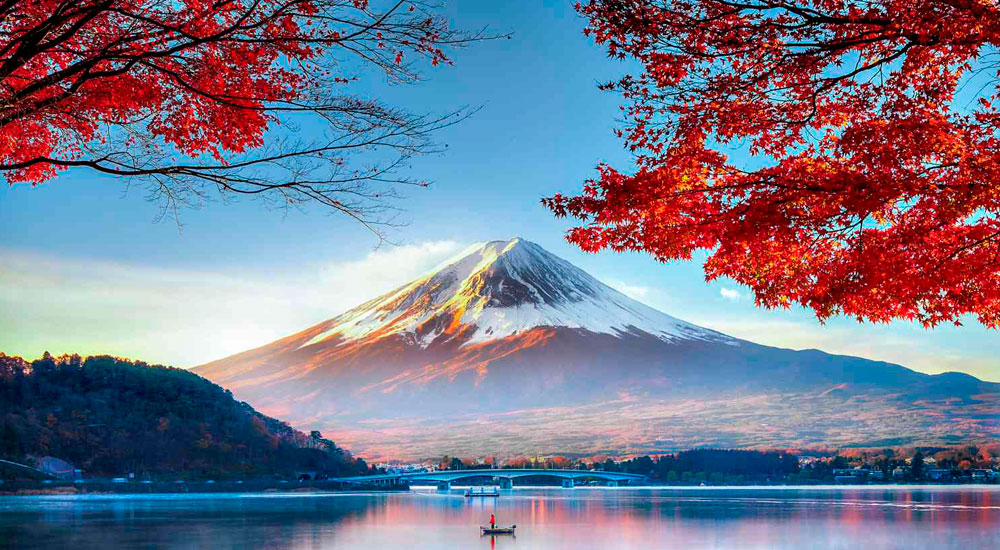
Andes Mountains
In the heart of South America, the towering Andes Mountains stretch their majestic arms across several countries, embracing a rich tapestry of indigenous cultures, timeless traditions, and spiritual reverence. These monumental peaks, rising like sentinels in the sky, hold a sacred place in the hearts and souls of the people who call this region home, including Peru, Bolivia, Chile, and Argentina.
Among these iconic Andean peaks are gems of spiritual significance that have captured the imagination of seekers and pilgrims for centuries. One such pinnacle is Huayna Picchu, nestled beside the awe-inspiring Machu Picchu in Peru. This mountain, with its enigmatic stone structures and ancient terraces, serves as a sacred canvas for those in search of profound spiritual experiences. Its heights, where the air is thin and the vistas are boundless, provide a sanctuary for introspection, meditation, and connection with the ancient spirits that have watched over these lands for millennia.
Further to the south, the Andes gift us Aconcagua, the highest peak in South America, rising resolutely in the heart of Argentina. It is a mountain that whispers the secrets of the universe to those who listen. Aconcagua’s lofty summit beckons intrepid souls to undertake a transformative journey, both physical and spiritual. Ascending this mighty peak, with each step, is a pilgrimage into one’s own soul, a passage through which individuals can encounter the profound and connect with the ancient spirits that call this mountain home.
In Bolivia, the silhouette of Illimani graces the horizon, a sacred sentinel that has stood watch over the Andean communities for generations. For the indigenous Aymara people, Illimani is a spiritual anchor, a conduit to the divine. Ascending this sacred peak is not merely a climb; it is a spiritual pilgrimage, a quest to touch the heavens and experience the energy of the cosmos. The rituals and ceremonies that take place on Illimani’s slopes are a testament to the enduring bond between humanity and this sacred mountain.
These Andean peaks are more than just geological formations; they are repositories of ancestral knowledge, steeped in the wisdom of indigenous traditions. They serve as natural temples where people can tap into the profound spiritual energy that flows through the veins of the Andes. Here, ancient rituals and modern practices merge, creating a harmonious blend of the old and the new, the earthly and the celestial.
In the Andes, the natural beauty of these mountains intertwines with the spiritual essence of the land. It is a place where the boundaries between the physical and the metaphysical blur, where the sacred and the mundane coexist in perfect harmony. For those who venture into the heart of the Andes, these mountains become not only a destination but also a source of transformation, a conduit to a deeper understanding of the self and the universe.
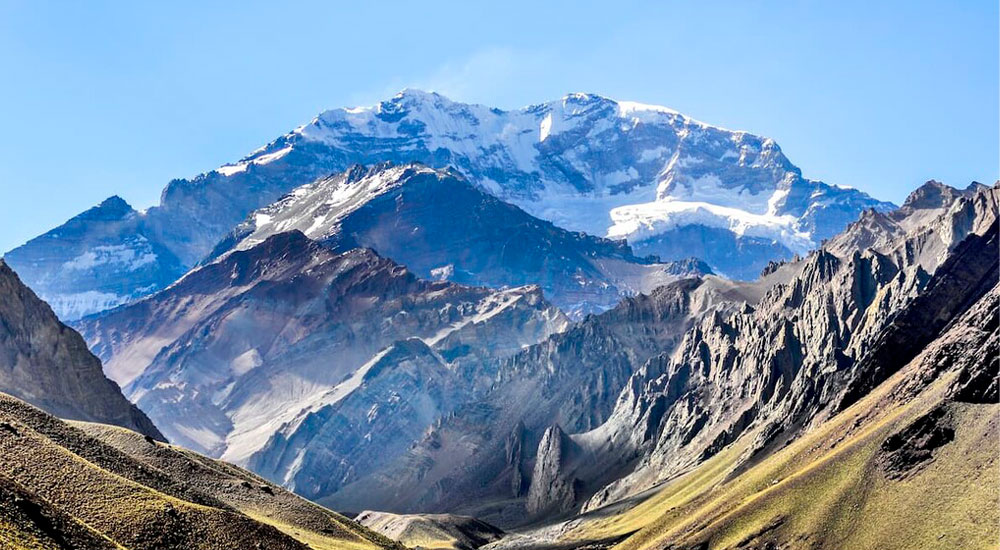
Himalayas
Nestled in the heart of the Asian continent, the Himalayas stand as a towering testament to the awe-inspiring power of nature. These colossal peaks, crowned by the majestic Mount Everest and the formidable Annapurna, are far more than geological marvels; they are living symbols of spirituality, revered and celebrated by diverse cultures that have thrived in their shadow for millennia.
In the sacred realm of the Himalayas, the air is imbued with mysticism, and the very land seems to breathe with the essence of the divine. For both Hinduism and Buddhism, these mountains are not merely natural formations but are believed to be the earthly homes of gods and hermit monks, where the earthly and the spiritual converge.
The Himalayas, often referred to as the “Abode of the Snows,” cradle a multitude of temples, monasteries, and shrines on their rugged slopes. These sacred places serve as beacons of spiritual devotion and enlightenment, attracting seekers, pilgrims, and scholars from around the world.
In the Kathmandu Valley of Nepal, the ancient city of Kathmandu itself is a treasure trove of spirituality. The Swayambhunath Stupa, with its iconic eyes gazing serenely over the valley, radiates spiritual energy. The Pashupatinath Temple, dedicated to Lord Shiva, is a site of reverence and mourning, where the cycle of life and death is celebrated with equal devotion.
Further into the Himalayas, in the serene landscapes of Tibet, you’ll encounter the iconic Potala Palace. This monumental structure, once the winter residence of the Dalai Lama, serves as a spiritual citadel and a testament to Tibetan Buddhism’s enduring presence in the region.
But perhaps the most iconic of all is Mount Everest, the tallest peak on Earth. Climbing Everest is not just a physical challenge; it is a spiritual journey for many. Summiting this sacred mountain is seen as a spiritual feat, a union with the divine, and a testament to the indomitable human spirit.
In Nepal, Annapurna, whose name means “Goddess of the Harvest,” is regarded with deep reverence. Annapurna Base Camp is not only a trekking destination but also a sacred site where trekkers and pilgrims alike find solace and spiritual rejuvenation.
The Himalayas resonate with spiritual seekers who undertake pilgrimages and ceremonies in pursuit of enlightenment, inner peace, and a profound connection with the divine. The act of traversing these rugged paths, often challenging and always awe-inspiring, is a form of worship itself. It is a tribute to the timeless power of these mountains to inspire and elevate the human spirit, reminding us that the sacred is not confined to temples but is found in the grandeur of nature itself.
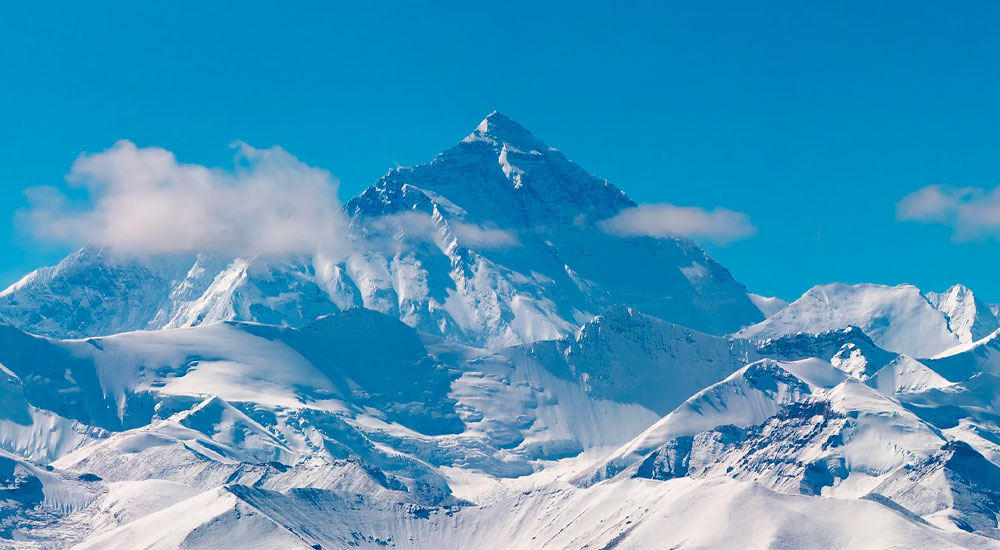
Complementary Information: Sacred Ceremonies in Salkantay and Ausangate, Cusco, Peru
Sacred Mountains in Cusco
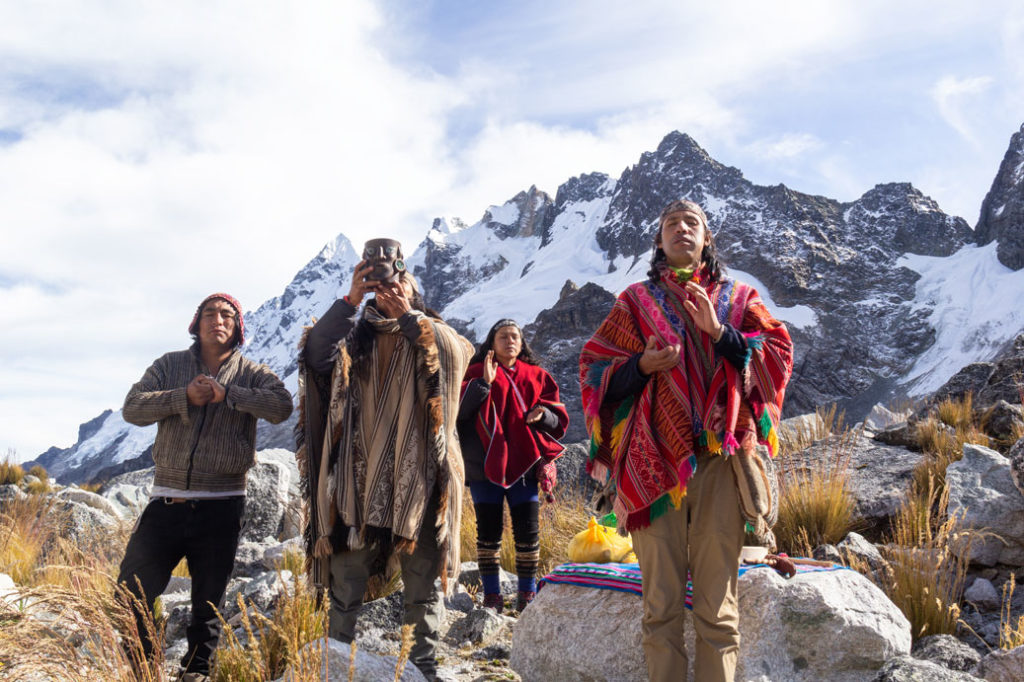
In the heart of Cusco, Peru, stand two towering sentinels of spirituality and cultural significance – the awe-inspiring Salkantay and Ausangate mountains. These magnificent peaks are far more than geological formations; they are the very backbone of ancient Andean traditions and continue to hold profound significance for the indigenous communities that call this region home.
For generations, these mountains have been revered as deities, sources of life, and powerful protectors. They are living monuments to the rich tapestry of Andean spirituality, where the sacred and the natural intertwine seamlessly.
Salkantay, often referred to as the “Savage Mountain” due to its challenging terrain, has long been considered a deity by the indigenous communities in the region. The mountain’s name itself derives from the Quechua words “sallqa,” meaning wild, and “ntay,” meaning mountain. It is believed that the Salkantay mountain spirit watches over the people, their crops, and their livestock. Local communities still pay homage to this powerful entity through traditional ceremonies, offerings, and rituals, seeking its protection and blessings.
Similarly, the Ausangate mountain, the highest peak in the Cusco region, holds a sacred place in the hearts of the Andean people. Known as “Apu Ausangate,” it is considered one of the most important apus, or mountain spirits, in the Andean cosmology. The mountain’s name comes from the Quechua word “Awsanqati,” signifying “to weave,” symbolizing the interconnectedness of all life. Indigenous communities, such as the Q’eros, continue to perform ancient rituals and ceremonies to honor Ausangate, seeking spiritual guidance, balance, and the vitality of the land.
The spiritual significance of these mountains extends beyond their role as deities. They are also seen as vital guardians of the natural world. The glacial waters that flow from their peaks are not just a source of sustenance but are believed to be spiritually charged, nurturing the land and its people. These pristine waters are often used in purification rituals, connecting individuals with the divine and renewing their spiritual essence.
In the shadow of Salkantay and Ausangate, the Andean way of life thrives. The enduring traditions of these indigenous communities continue to honor and celebrate these sacred mountains through music, dance, offerings, and ceremonies. The annual Qoyllur Rit’i festival, celebrated at the base of Ausangate, is a testament to the enduring power of these traditions. Pilgrims from across the region gather to pay homage to the mountain spirits, cementing the sacred bond between the people and their natural surroundings.
As visitors explore the Cusco region, they can immerse themselves in this living tapestry of spirituality. They have the unique opportunity to witness and even participate in these traditional ceremonies, gaining a profound appreciation for the spiritual heritage that has thrived in the Andes for centuries. Salkantay and Ausangate stand as living witnesses to this enduring connection between humanity and the sacred natural world, a testament to the profound and everlasting power of the mountains.
Salkantay Mountain: Salkantay
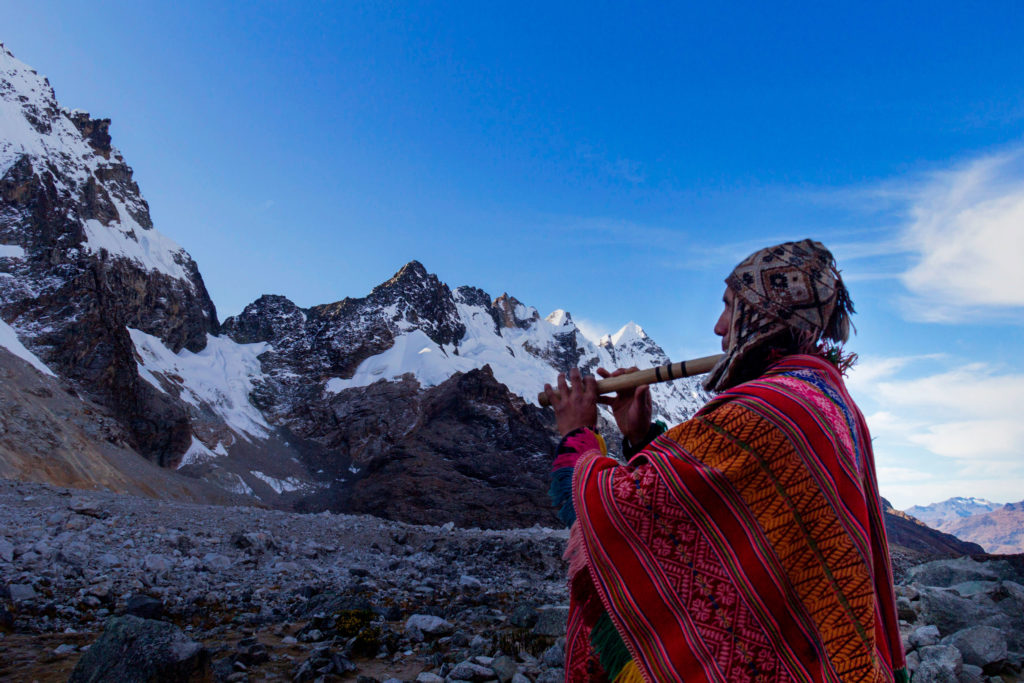
Salkantay, with its towering presence, stands as an iconic and revered figure in the sacred pantheon of the Andean cosmology. Its name, derived from the Quechua words “sallqa” (savage) and “ntay” (mountain), aptly reflects the mountain’s formidable and awe-inspiring character. For countless generations, the local communities dwelling in the shadow of this majestic apu have maintained a deep and spiritual connection with it.
Pachamama, or Mother Earth, holds a central place in the spiritual beliefs of the Andean people. Salkantay, as one of the most prominent representatives of Pachamama, is seen as a source of life, fertility, and protection for the land and its inhabitants. Recognizing the mountain’s significance, the communities conduct a myriad of offerings and ceremonies, particularly during the agricultural calendar, to honor and seek blessings from this sacred entity.
Travelers who embark on the Salkantay Trek are offered a unique opportunity to immerse themselves in these age-old traditions. Welcomed by the indigenous communities, they are often invited to participate in these ceremonies. This engagement provides a profound insight into the living heritage of Andean culture. Travelers can witness the deep reverence the locals hold for their natural surroundings and gain a firsthand understanding of the interwoven relationship between spirituality and the land.
The ceremonies themselves are imbued with symbolism and spiritual depth. Offerings of coca leaves, grains, and other items are presented to Pachamama, expressing gratitude for the sustenance provided by the earth and seeking her continued blessings for a bountiful harvest. The rituals are often accompanied by the mesmerizing melodies of traditional music and the intricate movements of indigenous dances, creating an atmosphere of reverence and celebration.
Participating in these ceremonies allows travelers to transcend the role of passive observers and become active participants in the rich tapestry of Andean spirituality. They can feel the energy of the land, hear the stories of the mountain, and connect with the spiritual essence that permeates the region. These experiences forge a profound bond between travelers and the local communities, fostering cross-cultural understanding and an appreciation for the enduring traditions that have thrived in the Andes for millennia.
In essence, the Salkantay Trek not only offers a breathtaking journey through the rugged beauty of the Andes but also provides a gateway to the spiritual heart of the Andean culture. It allows travelers to tread the same paths as the ancient Inca, to share in the rituals of the indigenous communities, and to honor the sacred bond between humanity and the land. It is a transformative experience that leaves a lasting imprint on the soul, fostering a deep connection with Pachamama and a profound appreciation for the traditions that continue to flourish in the shadow of Salkantay’s majestic slopes.
Ausangate Mountain:
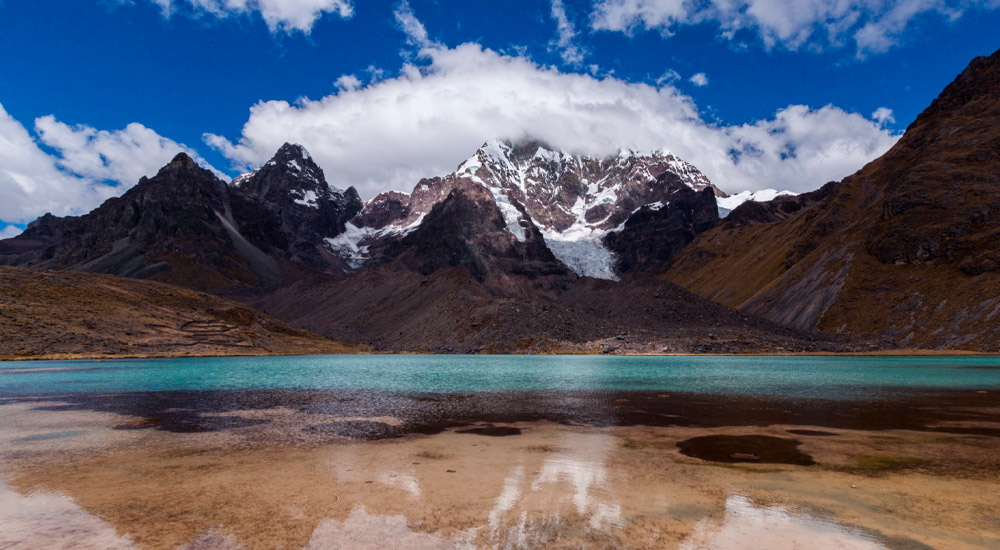
Ausangate, a formidable mountain that pierces the sky with its snowy peaks, commands deep respect and reverence among the Quechua communities residing in its shadow. In the rich tapestry of Andean cosmology, Ausangate is not merely a geographical feature but a guardian spirit, a deity intricately woven into the fabric of life itself.
The Quechua people, whose lives are intricately intertwined with the land and its cycles, hold Ausangate in the highest regard. To them, this towering apu symbolizes the circle of existence, where life, death, and rebirth are harmoniously orchestrated. It is a source of life-giving waters, nourishing the fertile valleys below and sustaining the herds of llamas and alpacas that are the lifeblood of the communities.
Shamans, revered as the intermediaries between the physical and spiritual realms, play a pivotal role in upholding the sacred connection with Ausangate. Through rituals and ceremonies, they seek to maintain the delicate equilibrium of life, offering gratitude for the blessings received and seeking guidance and protection for their communities.
The rituals performed in honor of Ausangate are imbued with deep symbolism and spiritual significance. They involve offerings of coca leaves, grains, and other sacred items, presented with utmost reverence. These offerings are meant to acknowledge the mountain’s role as a benevolent provider and to express the gratitude of the Quechua people for the abundance it bestows.
During these ceremonies, the rhythmic chants of the shamans resonate through the crisp mountain air, accompanied by the melodious sounds of traditional instruments. The shamans enter into a trance-like state, communicating with the spirit of Ausangate and invoking its blessings. They seek not only material prosperity but also spiritual growth, aiming to deepen their connection with the land and the divine forces that govern it.
Travelers who venture into the realm of Ausangate are often welcomed by the local communities to partake in these sacred ceremonies. This invitation is a gesture of openness and a bridge between cultures. For those who accept, it is an opportunity to witness the profound spirituality that permeates the Andean way of life and to connect on a spiritual level with the land and its inhabitants.
Participating in these rituals, travelers can feel the pulse of the Andes, hear the heartbeat of the Quechua culture, and touch the essence of Ausangate’s sacred presence. It is a transformative experience that transcends the boundaries of language and culture, fostering a deep appreciation for the interconnectedness of all life and the enduring traditions that honor it.
In essence, Ausangate stands not only as a majestic mountain in the Andes but as a living embodiment of the spiritual essence that continues to thrive in the heart of Cusco. It is a testament to the enduring relationship between humanity and the land, a relationship where reverence, gratitude, and harmony are celebrated in rituals that have persisted for generations. Through these ceremonies, the Quechua people remind us of the profound interdependence between human existence and the natural world, a lesson that resonates deeply in the sacred shadow of Ausangate.
Embarking on a spiritual journey to Salkantay and Ausangate not only offers breathtaking landscapes but also allows travelers to immerse themselves in the living spirituality of the Andean culture. Participating in these sacred ceremonies provides a unique opportunity to connect with the ancient wisdom of the land and gain a deeper understanding of the interconnectedness between humans and nature in this sacred corner of the world.

